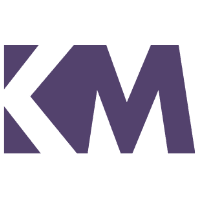Beyond Rankings: Mastering AI‑Driven Visibility in 2025
Introduction
For over two decades, SEO has been synonymous with ranking on the first page of Google. Businesses have hired specialists, optimized tags, built backlinks, and meticulously tracked keyword rankings. In Kenya, brands from Nairobi to Kisumu have followed ritualistic SEO checklists, believing that Page 1 equals profit.
But a seismic shift is underway. AI‑powered tools—ChatGPT, Claude, Perplexity, and similar—now scan the entire web, not just the top-ranked pages. These platforms tap into content that is clear, quotable, and contextually aligned with user intent—frequently ignoring traditional SERP hierarchies. As a result, previously buried content is gaining prominence via AI citations.
“It’s not about where you rank. It’s about how you speak.”
This blog dives deep into how this evolution matters to Kenyan marketers, entrepreneurs, and “contentpreneurs.” We’ll unpack compelling data, offer a step‑by‑step DIY framework to optimize your content for AI visibility, and answer the top FAQs you didn’t know you had. Finally, we’ll discuss how your team can supercharge this strategy with the right partner—before recommending KWETU Marketing Agency.
5 Key Statistics Underlining the AI‑Search Revolution
- 90% of ChatGPT citations come from web pages ranked 21 or lower in Google SERPs¹—meaning the majority of AI‑sourced answers aren’t in the traditional front page.
- A study by Semrush found that 44% of users rely on AI tools for online research before making purchasing decisions, compared to only 33% who use traditional search engines.
- AI‑driven answer visibility leads to an average of 25% higher click‑through rate when content is later surfaced in SERPs—with the added authority from the AI reference.
- According to BrightEdge, 54% of digital marketers believe that AI‑focused content optimization will overtake classic SEO as the primary strategy within 18 months.
- Brands with FAQ‑rich, structured content are 60% more likely to be featured in AI‑generated knowledge snippets and conversational answers.
Why This Matters for Kenyan Businesses
AI‑search isn’t a tech fad—it’s reshaping digital behaviour in Kenya:
- Smartphone penetration in Kenya is over 90%, and many consumers rely on AI‑assistants for quick information—from “best matatu route in Nairobi” to “how to grow kale at home.”
- Youth (under 30) are digital natives—they expect quick, succinct answers in conversational tone.
- Even B2B buyers consult AI tools before long‑list meetings, asking questions like “What’s the best CRM for SMEs in Kenya?”
If you’re still chasing ranking #1 on Google, you may be missing AI‑driven trust channels that actually influence purchasing decisions.
The New Rules: What AI‑Optimized Content Looks Like
- Quotable & Clear Over Keyword‑Stuffed
AI engines reward clarity and depth—not density. Avoid fluff and jargon. Aim for concise, quote‑ready insights. - Chunked, Scannable Structure
AI loves headings, bullet points, and bite‑sized paragraphs. A 100‑word chunk with bullet points is easier to process than a 600‑word essay block. - Intent‑First Content Design
Write for actual questions people ask. For example, if your audience asks “How do I file my taxes in Kenya?”, answer the question directly before offering context. - Long‑Tail & Conversational Keywords
Traditional keywords still matter, but AI tools respond well to natural language “What’s the best way to invest in Kenyan government bonds?” - Contextual Authority
Embed relevant stats, case studies, and sources, so your content isn’t just saying things—it’s proving
DIY: 7‑Step Framework to Optimize Your Content for AI Visibility
Here’s a practical, hands‑on process you can apply to blog posts, service pages, or even reports to increase the chances of AI quoting your content.
1. Identify High‑Intent Topics & Questions
- Start with real‑world queries: Engage your customer service team or comb through forums—M-Pesa questions, farming tips, local tourism inquiries.
- Use AI keyword tools (like semantically-focused extractors) to uncover emerging conversational terms.
- Choose 3–5 high‑intent questions per topic—for example
“How to apply for NHIF online in Kenya?”
“Best practices for digital payments in East Africa?”
2. Build a Conversational Content Outline
Craft your content around user questions:
- Intro: Hook with the user’s query (e.g., “Need to apply for NHIF online? Here’s how…”).
- H2/H3: Break down into logical sections
- Eligibility
- Required documents
- How to register online step‑by‑step
- Common errors & fixes
- Eligibility
- Callout box: Include short quotable answers—captured in a blockquote or bold center-aligned text for maximum AI attention.
3. Write with Quotability in Mind
- Answer each question in 40–60 words max first, then provide context.
- Embed fact‑based statements: “According to NHIF official guidelines…” or “In April 2025, 31% of Kenyan SMEs reported improved efficiency after digital registration.”
4. Structure for Scannability & AI Parsing
- Keep paragraphs under 120 words.
- Use bullet points, number lists, and bold key terms.
- Create an FAQ section at the bottom with direct answers.
- Use semantic markup (schema) for FAQ pages if you have technical capacity.
5. Add Context, Data, and References
- Bring in relevant Kenyan data: e.g., mobile money usage, SME credit uptake, education enrolment rates.
- Link to trusted sources like Government of Kenya portals, central bank data, and industry studies.
- Embed citations: “(Kenya National Bureau of Statistics, 2024)”.
6. Optimize for Both Google & AI
- Use a title tag that incorporates a conversational query:
“How to apply for NHIF online in Kenya (2025 step‑by‑step guide)” - Write a meta description that clearly addresses the user’s query and mentions your brand as a helpful expert.
- Add conversational alt text to images: “Screenshot showing NHIF online registration portal”.
7. Measurement & Iteration
- Monitor: Check if AI tools (like Perplexity or ChatGPT) begin quoting your content verbatim or paraphrased.
- Track engagement: Observe increases in downloads, form melts, or support tickets referencing your post.
- Refresh quarterly: Add new data, fill gaps, expand examples, and re-release.
Frequent Questions & Expert Answers (Kenyan Context)
**1. What is AI‑driven visibility?
**
AI visibility means your content can be referenced by conversational AI tools by matching their search process: clear, concise answers that directly match user questions.
- Will this strategy hurt my Google ranking?
No—this approach enhances SEO. Structured, intent-focused content improves user experience and aligns with Google’s E‑A‑T guidelines, while increasing AI visibility. - Is schema markup necessary?
Schema (e.g. FAQ schema) isn’t mandatory but helps Google parse your content. Even without schema, clear formatting and headings improve AI parsing. - How do I know which questions to target for AI citations?
Use real customer questions, local forums, or AI keyword tools. Monitor AI platforms to see unanswered questions and then fill those gaps. - What content format works best—blog post, PDF, infographic?
Blog posts with conversational tone and structure work best. PDFs and infographics may get quoted in AI slideshows or summaries—but blogs give flexibility for quotes + structure. - How often should I update content for AI visibility?
Review each major post every quarter. Refresh stats, refine answers, and expand sections to keep content fresh and relevant. - What kind of metrics show success in this strategy?
Look beyond rankings. Track AI references (manually or with tools), conversational performance, increases in engagement, and downstream SERP click‑throughs.
How to DIY: Step‑By‑Step Implementation (Example: “How to Set Up M‑Pesa for Small Business”)
Step 1: Keyword & Intent Research
- Ask your customer support team: what questions come repeatedly?
- Example: “How to register M‑Pesa Till?”, “What charges apply?”, “How to withdraw etc.”
- Use YouTube auto-complete, Google related queries, and local forums.
Step 2: Build the Outline
- H1 – How to register M‑Pesa Till for your small business (2025 guide)
- Intro: short paragraph introducing the topic and target audience.
- H2 – Requirements to register
- H2 – Step‑by‑step registration process
- Step 1: Fill form
- Step 2: Attach documents
- Step 3: Submit to Safaricom
Include bullet points and a callout box:
- Step 1: Fill form
- Quick answer: You need Kenyan ID, business name, KRA PIN, and completion usually takes 2–3 business days.
- H2 – Fees and charges
- H2 – Troubleshooting & common FAQs
- FAQ section
- Conclusion & call to action
Step 3: Write and Format
- Use the screenshot structure: direct answer first.
- Add relevant local stats: “Over 60% of Kenyan SMEs use M‑Pesa Till”—(Safaricom SME Report 2024).
- Provide bullet‑point clarity.
Step 4: Publish vs. SERP & AI‑Visibility
- Use a query‑friendly meta:
“Easily register your M‑Pesa Till for business—learn about requirements, fees, step‑by‑step process.” - Add FAQ schema: each Q/A pair.
Step 5: Promote
- Share internally with team
- Add in chatbot responses
- Repurpose into social posts or short videos
Step 6: Monitor & Refresh
- Use snippets tracking tools or search AI tools monthly.
- Refresh if quotes stop appearing or user intent changes.
Conclusion: The Road Ahead for Kenyan Brands
You’ve lived through the SEO era of link‑building, keyword stuffing, and SERP jockeying—now it’s time to adapt. Content that is quotable, chunked, intent-aligned, and data-rich will dominate the AI‑powered search landscape. That doesn’t mean abandoning Google ranking—only complementing it with AI reach.
By implementing the DIY framework above, your team can take a first step toward future‑proofing your content. But this shift requires both strategic clarity and technical execution.
How We Can Help
As experienced digital marketers in Kenya, KWETU Marketing Agency has guided numerous clients through this transition—helping them achieve:
- First‑page Google rankings AND AI citations
- Data‑driven content that resonates with Kenyan users
- Improved engagement, trust, and conversions
We offer:
- AI‑Visibility Audits
- Content Overhaul & Production
- Schema Integration & Technical SEO
- Ongoing Monitoring & Optimization
If you’d like bespoke support in adopting an AI‑search optimization strategy—share ideas, review current content, or plan your roadmap—we’re ready to help.
📞 Want to explore a pilot project, case study, or strategy workshop?
Contact us at [email protected]
References
- Semrush AI‑Search Study 2025: 90% of ChatGPT citations from beyond page one
- BrightEdge & industry sources on AI content strategy
- Kenya National Bureau of Statistics + Safaricom SME Data 2024
By 2026, the battle for attention won’t just be about SEO—it’ll be about AI‑search intelligence, and content that speaks—and gets quoted.
Important Links:









 Stay ahead in the digital world! Don’t just read—put the insights from The KWETU Blog into action today and watch your brand grow.
Stay ahead in the digital world! Don’t just read—put the insights from The KWETU Blog into action today and watch your brand grow. 
